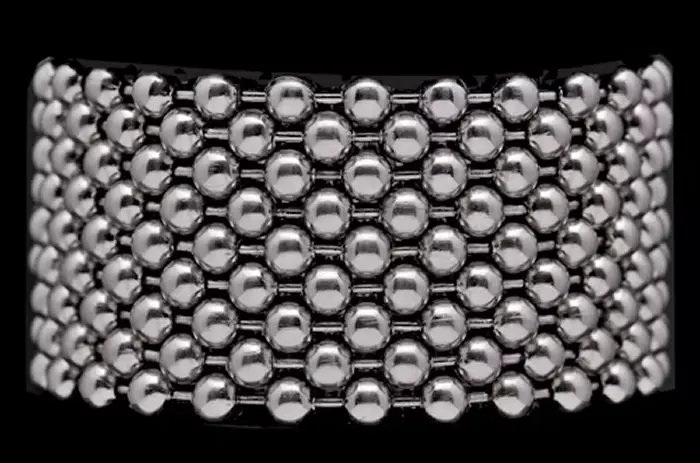Welcome to my comprehensive guide on how to play the cabasa!
Whether you’re a beginner or an experienced musician, this tutorial will provide you with all the information you need to master this versatile percussion instrument.
In this guide, we will walk you through the different playing techniques, exercises, and maintenance tips to help you become a skilled cabasa player.

The cabasa is a unique instrument that can be used in various genres of music and is popular among both music therapists and musicians.
With its distinct sound and versatility, the cabasa offers numerous benefits for sensory stimulation, motor skill development, and therapeutic sessions.
Throughout this article, we will explore the history of the cabasa, and its role in music therapy, and provide step-by-step instructions on how to play this fascinating instrument.
Content
History of the Cabasa
The cabasa is an intriguing percussion instrument with a rich history that spans continents. While the exact origins of the cabasa remain uncertain, it is believed to have emerged from both Africa and Latin America.
The instrument bears a resemblance to the African Shekere, a traditional gourd-based instrument with beads or shells. It has also been utilized in Latin American traditional music, adding to its diverse cultural heritage.
The modern version of the cabasa, commonly used by music therapists and musicians today, has evolved from its ancestral roots. This contemporary variant features a construction of wood or plastic with metal beading.
The combination of materials and design elements has contributed to the instrument’s popularity, renowned for its versatility and appealing sound.
| Feature | Origin |
|---|---|
| Shape | African Shekere and Latin American traditional music |
| Main Material | Wood or plastic |
| Beads or Shells | African Shekere and modern version of the cabasa |
| Metal Beading | Modern version of the cabasa |
Music Therapy and the Cabasa
The cabasa is an invaluable instrument in the field of music therapy. With its versatile nature, it serves as an effective tool for sensory stimulation, joint mobility improvement, and proprioceptive feedback.
When rolled on various parts of the body, the cabasa provides tactile and proprioceptive input, helping individuals with sensory needs to enhance their sensory processing abilities.
Furthermore, the cabasa can be utilized to target specific joints, enhancing flexibility and promoting motor skill development.
Its unique design allows therapists to adapt its usage according to individual needs—whether played with one or two hands. This adaptability makes the cabasa a versatile and inclusive instrument for individuals of varying abilities.
Music therapists harness the therapeutic potential of the cabasa to address motor needs and provide enjoyable experiences for their clients.
By incorporating the cabasa into therapy sessions, therapists create a therapeutic environment that fosters self-expression, emotional release, and overall well-being.
Through the use of the cabasa, music therapists can tailor interventions and activities that align with the specific goals and needs of their clients.
Whether the objective is to enhance motor skills, improve coordination, or promote relaxation and stress reduction, the cabasa offers endless possibilities for creative and engaging music therapy sessions.
| Benefits of the Cabasa in Music Therapy |
|---|
| Sensory stimulation |
| Joint mobility improvement |
| Proprioceptive feedback |
| Inclusive instrument |
| Motor skill development |
| Creative self-expression |
Playing Techniques for the Cabasa
Mastering the art of playing the cabasa requires familiarizing yourself with various playing techniques.
By exploring these techniques, you can create a wide range of sounds and rhythms with this versatile percussion instrument.
Here are some essential playing techniques for the cabasa:
- Slapping down on the drum in the center with the palm: By striking the drumhead with the palm of your hand, you can produce a sharp and pronounced sound. This technique is ideal for punctuating rhythms and adding emphasis to your playing.
- Tapping the outside edges with the fingertips: Use your fingertips to tap the outer edges of the drumhead. This technique produces a lighter and more delicate sound, perfect for creating subtle rhythms and textures.
- Using the knuckles to strike the drum: Similar to the previous technique, you can use your knuckles to strike the cabasa’s drumhead. This method generates a unique sound and can be used to add variation to your playing.
- Using the full palm to create bass tones: By placing your entire palm on the drumhead and applying pressure, you can create deep and resonant bass tones. This technique adds a rich and full-bodied sound to your playing.
- Slapping the drum for a loud, snapping sound: For a bold and percussive sound, slap the cabasa’s drumhead. This technique produces a sharp and snapping sound, ideal for dramatic accents and rhythmic accents.
- Touching the drumhead for a subtle sound: Simply touching the drumhead with your fingertips or palm can create a soft and subtle sound. This technique is excellent for adding delicate nuances and textures to your playing.
With regular practice and experimentation, you can develop your own unique playing style and explore a wide range of sounds and techniques with the cabasa.
Tips for Playing the Cabasa
Are you a beginner looking to master the art of playing the cabasa? Here are some helpful tips to get you started:
- Experiment with different playing techniques and strokes to familiarize yourself with the sound and feel of the instrument.
- Practice the basic strokes, such as slapping, tapping, and using the full palm, to develop control and precision.
- Try out different rhythms and patterns to create your unique playing style.
- Engage your entire body while playing the cabasa to add rhythm and dynamics to your performance.
- Tune your cabasa by adjusting the tightness of the drumhead to achieve different pitches.
- Make sure to practice regularly to improve your skills and become more comfortable with playing the cabasa.
By following these tips, you’ll be well on your way to becoming a skilled cabasa player. Keep practicing and experimenting to discover new techniques and create captivating rhythms with this versatile percussion instrument.
Exercises for Playing the Cabasa
To improve your cabasa playing skills, here are some exercises you can try:
- Start by practicing basic rhythms and patterns, focusing on accuracy and control.
- Gradually increase the speed of your playing, challenging yourself to maintain a steady rhythm.
- Experiment with different tempos and dynamics to develop versatility in your playing.
- Play along with music or other musicians to develop your ability to keep time and play in a group setting.
- Incorporate the cabasa into your daily practice routine to build strength, endurance, and muscle memory.
- Seek guidance from a music teacher or join a percussion ensemble to receive feedback and further develop your playing skills.
Practicing these exercises regularly will help you master the cabasa and enhance your playing abilities.
Remember to start with the basics and progress at your own pace. With dedication and practice, you will become proficient in playing the cabasa and unlock its full potential as a percussion instrument.
Using Multiple Cabasas Together

Advanced players may want to explore the exciting possibilities of playing multiple cabasas or combining them with other percussion instruments.
By playing multiple cabasas simultaneously, you can create a harmonious symphony of sound and enhance the complexity of rhythms and patterns.
However, it is crucial to listen attentively and maintain a steady tempo to ensure a synchronized performance.
Experimenting with different combinations and arrangements of multiple cabasas can unlock new sounds and textures, allowing you to find the perfect blend that suits your artistic vision.
Whether you choose to play with other percussion instruments or create a cabasa ensemble, the opportunities for musical expression are endless.
Remember, practicing regularly is key to mastering the art of playing multiple cabasas or incorporating them into a percussion ensemble.
Embrace the challenge, stay committed, and push yourself to expand your musical boundaries. With dedication and creativity, you can create captivating rhythms and showcase your talent as a versatile musician.
Tuning and Maintenance of the Cabasa
To ensure that your cabasa continues to produce high-quality sound and lasts for years to come, it is important to prioritize its tuning and maintenance. Regularly checking and adjusting the tightness of the drumhead is crucial for optimal performance.
You can accomplish this by utilizing the screws and lugs on the instrument. Remember to tune your cabasa in a clockwise rotation to achieve the desired tone and pitch.
In addition to tuning, regular maintenance is key. Take the time to clean your cabasa with a soft cloth after each use, removing any dust or debris that may have accumulated. This helps to preserve the instrument’s appearance and functionality.
While cleaning, be sure to carefully inspect the cabasa for any signs of wear or damage. If you notice any issues, it is advisable to consult a professional for repairs or adjustments.
By dedicating time to tuning and maintaining your cabasa, you can ensure that it remains in optimal condition, producing the best possible sound.
Taking proper care of this delightful percussion instrument will not only enhance your playing experience but also extend its lifespan, allowing you to enjoy its unique sound for many years to come.
